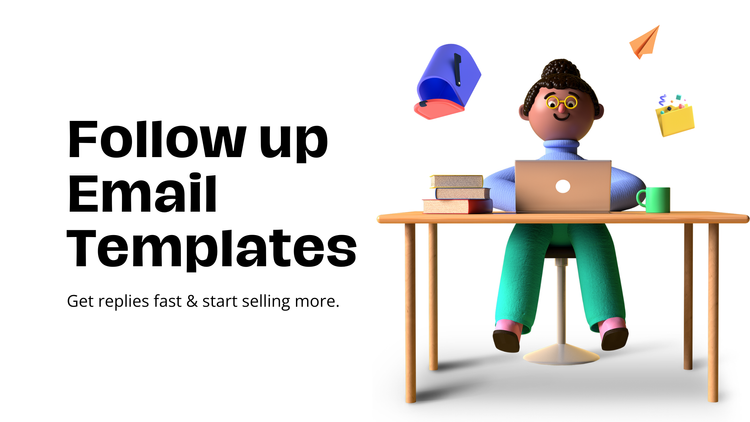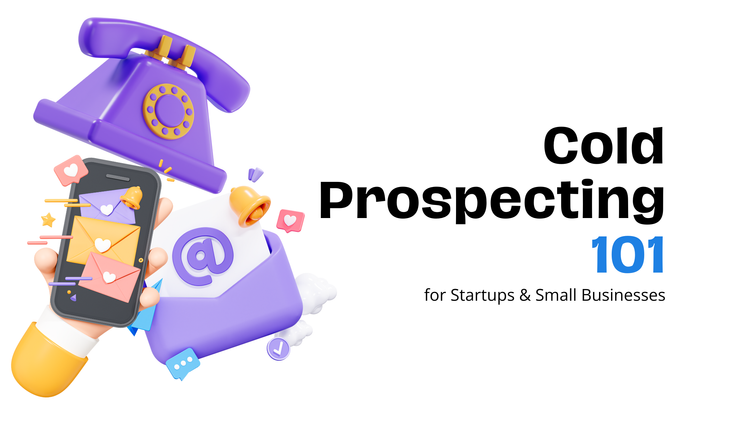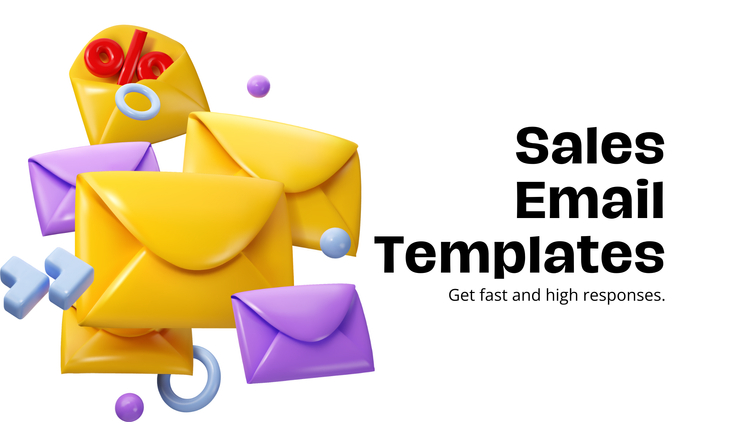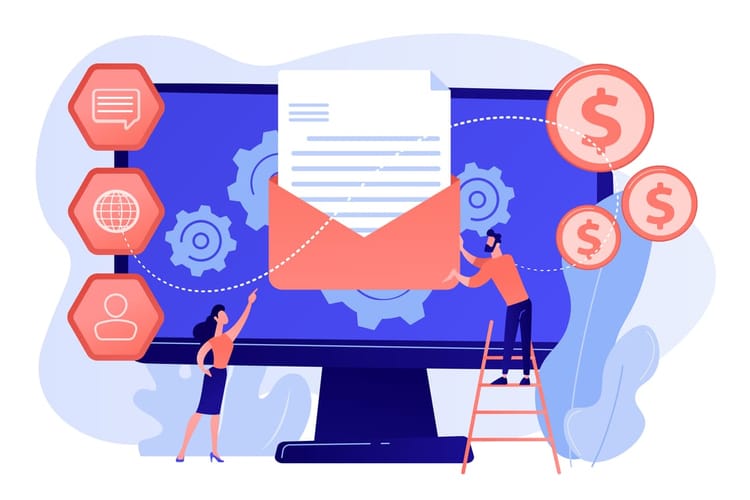Personalizing Your Prospecting Introduction Email: 6 Tips
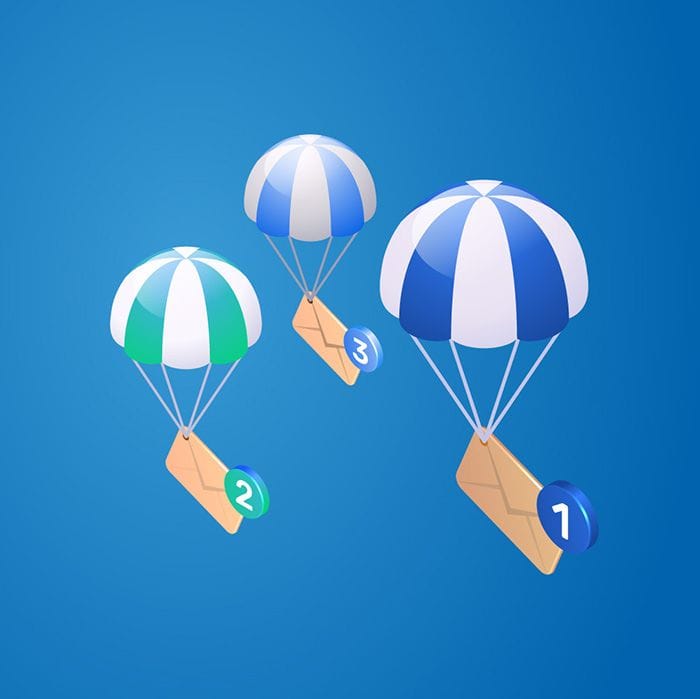
Personalization is crucial for a prospecting introduction email’s success. It shows that you care about their needs and want to make a real connection. So how can you start personalizing your emails?

Simply including the person’s name in your cold email subject lines can help them mentally note that you are a real person who is reaching out to them. Even personalization by means of researching and developing a highly targeted list of similar audiences can result in an impressive open rate.
In an experiment published by FastCompany, a co-founder and founder teamed up to send 1,000 highly personalized emails to high-level executives. After doing their research on the recipients and incorporating that info into their copy, they were able to get 707 cold emails delivered successfully, and 45.5% of those 707 opened.
Considering the average email open rate is around 21%, research and the personalization resulting from it have proven to be important indicators for a prospecting introduction email success.
Explore these seven tips for personalizing your prospecting introduction email:
1. Match Industry & General Context
In addition to using a prospect’s name in the subject line or the beginning of the email's body message, some other basic personalization is necessary. You can include information like their industry. For instance, you can write something like, “We help businesses like yours in [industry] with…”
You can mention some competitors in their industry that you’ve researched to grab their attention even more. After all, they won’t want to fall behind their competitors. And that information might incentivize them to look into your offering.
2. Make the Intro All About Them
Start the body of your prospecting introduction email by talking about them. Let them know that you know about their company, their job title, or who they are personally. You can mention their pain points or even ask about them to get more details.
Remember that this email is not about your needs; it’s all about theirs. Let them know right out of the gate how your offering can help them. If it helps, ask yourself, “how is my product or service going to help them?” Just be sure not to include too many links to your products, as this could be distracting and the reader might assume your email is spam.
3. Talk About How You Know Them
This could also include commonalities you have with your prospect. Let them know you did your research without directly telling them you did your research—this is what personalization is all about. By mentioning industry trends or info about their company, you’re showing them that you know how your product or service can help them.
You don’t necessarily need to get hyper-personalized, but you do need to show them your email isn’t spam. For example, “I just read your [comment/post/status] on [website/platform] and wanted to reach out to say…”
4. Tell Them WHY You’re Reaching Out
Did you see them in a recent news story? Did they just get a promotion? Do you have a mutual connection? Personalization starts with connecting to your recipient. People trust others more readily if they are similar to them. For example, you can tell them you came across their LinkedIn profile while researching top people in their industry and location. Anything unique that you can relate to in your prospecting introduction email could make the difference between a response and a deleted prospecting email.
A mutual connection is always a good idea if you have one. People react well to personal recommendations; it’s that trustworthy bond that gets prospects to respond, not a random email asking them to do something. If it’s possible to mention a mutual friend or colleague, or anyone they might respect for that matter, social proof can help them realize you are worth talking to.
5. Segment by Buyer Persona
Look at your customers to discover your target audience or ideal client. Usually, companies have multiple buyer personas. You’ll want to separate those buyer personas into groups and create a different email for each one. Each group will meet certain criteria, such as industry, company size, job title, and challenges and needs.
By writing relevant messages to each group, you won’t have to personalize emails to each person. The only parts you might need to customize are their name and job title.
6. Personalize With a Compliment
If you discover in your research that someone has recently won an award, got published, or is someone that you admire, compliment them. Almost everyone enjoys receiving praise, and your potential customers are no different
Mark L. Knapp, an interpersonal communication expert at the University of Texas at Austin, said
“We all seek recognition and support in order to live a healthy life and when there are no compliments, we feel psychologically undernourished.”
And the best part is that compliments are easy to give—simply compliment or admire their achievement in your first sentence.
7. Send Your Personalized Email at the Right Time
Don’t let all that hard work creating personalized emails go to waste. By sending emails at particular times of the day and week, you can increase the chances that they will be opened.
For example, one GetResponse study found that the best hour to send emails for open rates is 4 AM and 6 AM for click-through rates, with Thursday being the best day to send them. But what others have found may not work for your audience. It’s important to test with different sending days and times yourself, and see what works best.
Find the Right Prospecting Information
While these seven tips will help you personalize your prospecting introduction emails, you’ll have to find the right contact information first. You’ll want to utilize an email lookup tool that helps you find verified email addresses that are essential to your efforts.
Try our business email lookup web extension to find the contact information you need to fill out your prospecting list. Whether it's through LinkedIn, a company's website, or using our in-app features, we help you build accurate email lists for your next outreach campaign.

